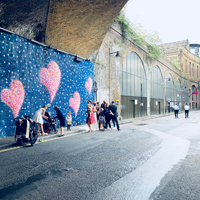Public Transportation in Yokohama
Summary: Mastering the public transportation system in Yokohama is a crucial aspect of adapting to life there. This article provides a detailed overview of the available local transit options.
Yokohama's second largest city, boasts an extensive and efficient public transportation system that includes the subway, buses, and trains. The city's public transportation is managed by several entities including the Yokohama Municipal Subway, the Yokohama City Bus, and the East Japan Railway Company. With such a comprehensive network, it's entirely possible for an expat living in Yokohama to comfortably live without a car, relying solely on public transportation and walking.
Yokohama Municipal Subway
The Yokohama Municipal Subway is a major part of the city's public transportation system. It is safe to use at any time of the day, even at night, and is also safe for women traveling alone or children going to school. The subway system consists of two lines: the Blue Line and the Green Line. The Blue Line, which is the longer of the two, runs from Shonandai to Azamino, passing through Yokohama Station, the city's main transportation hub. The Green Line, on the other hand, runs from Hiyoshi to Nakayama. A one-way ticket costs between 210 yen to 380 yen depending on the distance traveled.
Yokohama City Bus
The Yokohama City Bus provides another convenient way to get around the city. The buses cover areas not serviced by the subway or train lines, making them an essential part of the city's public transportation system. The bus routes are extensive, reaching even the more remote areas of Yokohama. The fare is determined by the distance traveled, with a one-way ticket costing between 220 yen to 680 yen. The buses are safe and reliable, and they operate from early morning until late at night.
East Japan Railway Company (JR East)
The East Japan Railway Company, also known as JR East, operates several train lines that pass through Yokohama. These include the Keihin-Tohoku Line, the Yokosuka Line, and the Shonan-Shinjuku Line. These lines connect Yokohama to other major cities in the Kanto region, including Tokyo. The trains are safe, punctual, and efficient, making them a popular choice for both locals and expats. The fare depends on the distance traveled, with a one-way ticket from Yokohama to Tokyo costing around 450 yen.
Minatomirai Line
The Minatomirai Line is a subway line that connects Yokohama Station to Motomachi-Chukagai Station, passing through the city's main business and entertainment district. The line is known for its modern and clean trains, and it offers a convenient way to explore the city's waterfront area. The fare for a one-way trip ranges from 180 yen to 270 yen.
Sea Bass
For a unique way to get around Yokohama, consider taking the Sea Bass, a water bus that operates in Yokohama Bay. The Sea Bass offers two routes: one that connects Yokohama Station to Yamashita Park, and another that goes to Minato Mirai and the Red Brick Warehouse. The fare for a one-way trip is 700 yen. The Sea Bass is not only a practical means of transportation, but it also offers stunning views of the Yokohama skyline.
In conclusion, Yokohama's public transportation system is comprehensive, efficient, and safe. Whether you're commuting to work, going to school, or exploring the city, you can rely on the city's subway, buses, and trains to get you to your destination. So, if you're an expat living in Yokohama, you can definitely live comfortably without a car.
About the Author
 Betsy Burlingame is the Founder and President of Expat Exchange and is one of the Founders of Digital Nomad Exchange. She launched Expat Exchange in 1997 as her Master's thesis project at NYU. Prior to Expat Exchange, Betsy worked at AT&T in International
and Mass Market Marketing. She graduated from Ohio Wesleyan University
with a BA in International Business and German.
Betsy Burlingame is the Founder and President of Expat Exchange and is one of the Founders of Digital Nomad Exchange. She launched Expat Exchange in 1997 as her Master's thesis project at NYU. Prior to Expat Exchange, Betsy worked at AT&T in International
and Mass Market Marketing. She graduated from Ohio Wesleyan University
with a BA in International Business and German.
Some of Betsy's articles include 12 Best Places to Live in Portugal, 7 Best Places to Live in Panama and 12 Things to Know Before Moving to the Dominican Republic. Betsy loves to travel and spend time with her family. Connect with Betsy on LinkedIn.




